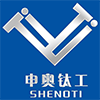
What is a copper-clad aluminum sheet transition joint?
2025-04-10 10:23:02
Copper Cladding Aluminum Sheet Transition Joints are specialized components designed to join copper and aluminum materials effectively. These joints are essential in applications where the electrical conductivity of copper and the lightweight nature of aluminum are both desired.
Composition and Manufacturing
The manufacturing of these transition joints involves bonding a layer of copper to an aluminum substrate. This process can be achieved through various methods, including explosion bonding and roll bonding. The resulting clad material combines the high electrical and thermal conductivity of copper with the lightweight and corrosion-resistant properties of aluminum.
Functionality
In practical applications, these transition joints serve as connectors that facilitate the efficient transfer of electrical currents between copper and aluminum components. They are particularly valuable in industries such as power generation and electronics, where minimizing energy loss and ensuring structural integrity are paramount.
Why Are Copper Clad Plates Preferred in Electrical Applications?
Copper Clad Plates are widely utilized in electrical applications due to their unique combination of properties that enhance performance and longevity.
Enhanced Electrical Conductivity
Copper is renowned for its excellent electrical conductivity. When clad onto a substrate like aluminum or steel, it provides a conductive surface that ensures efficient current flow. This is particularly beneficial in the production of printed circuit boards (PCBs) and electrical busbars, where consistent conductivity is crucial.
Corrosion Resistance
The copper layer offers superior corrosion resistance, protecting the underlying material from environmental factors that could degrade performance over time. This characteristic is essential in applications exposed to moisture or other corrosive elements.
Structural Integrity
By combining copper with a sturdier substrate like steel, the clad plate gains enhanced mechanical strength. This fusion allows for the creation of components that are both strong and conductive, suitable for demanding electrical environments.
How Do Stainless Copper Aluminum Clad Plates Compare to Traditional Copper Clad Plates?
Stainless Copper Aluminum Clad Plates represent a further evolution in clad material technology, offering a blend of properties from three distinct metals.
Composition and Properties
These clad plates consist of layers of stainless steel, copper, and aluminum. Each metal contributes specific advantages:
Stainless Steel: Provides excellent corrosion resistance and structural strength.
Copper: Offers superior electrical and thermal conductivity.
Aluminum: Adds lightweight characteristics and additional corrosion resistance.
The combination results in a material that is not only strong and durable but also highly conductive and lightweight.
Advantages Over Traditional Copper Clad Plates
While traditional Copper Clad Plates typically involve a copper layer bonded to a single substrate (such as steel or aluminum), Stainless Copper Aluminum Clad Plates incorporate three layers, each contributing unique benefits. This tri-metal composition allows for greater versatility in applications requiring a balance of strength, conductivity, and weight considerations.
Applications
These multi-layered clad plates are particularly useful in industries where components must withstand harsh environments while maintaining optimal electrical performance. Applications include marine engineering, aerospace, and advanced electronics, where the combined properties of the three metals meet stringent performance criteria.
What Are the Key Considerations When Selecting Clad Materials for Specific Applications?
Choosing the appropriate clad material involves evaluating several factors to ensure compatibility with the intended application.
Mechanical and Electrical Requirements
Assess the mechanical strength and electrical conductivity needed for the application. For instance, power transmission components may prioritize conductivity, while structural elements may require enhanced strength.
Environmental Conditions
Consider the operating environment, including exposure to corrosive elements, temperature fluctuations, and mechanical stresses. Materials like Stainless Copper Aluminum Clad Plates offer superior corrosion resistance, making them suitable for harsh conditions.
Weight Constraints
In applications such as aerospace or automotive industries, reducing weight without compromising performance is critical. Clad materials that incorporate aluminum can provide the necessary strength while keeping weight to a minimum.
Cost Efficiency
Evaluate the cost implications of the material choice, balancing the initial investment against the expected lifespan and maintenance requirements. Clad materials can offer a cost-effective solution by combining expensive metals like copper with more affordable substrates.
Copper Cladding Aluminum Sheet Transition Joints and Stainless Copper Aluminum Clad Plates exemplify the advancements in material engineering that enable the effective combination of different metals' properties. These innovations provide tailored solutions across various industries, enhancing performance, durability, and efficiency. Understanding the functionalities and advantages of these clad materials is essential for selecting the most suitable components for specific applications.
Contact Us
For more information or to discuss your specific requirements, please contact us at: Email: zh@baojiti.com.cn
YOU MAY LIKE











